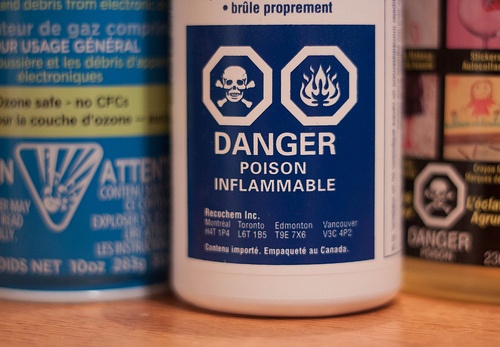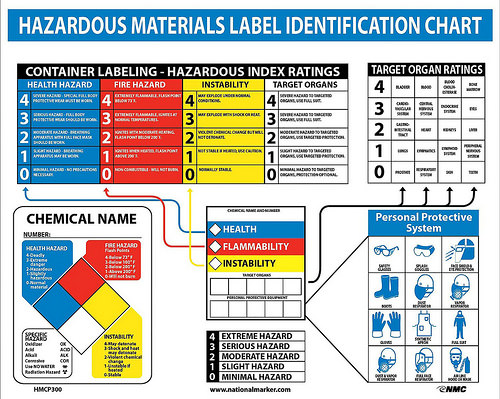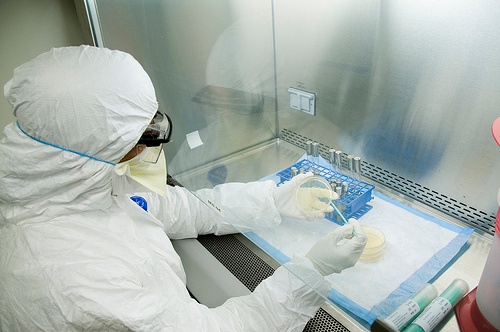EPA has just issued final rules to limit exposure to formaldehyde emissions from plywood and other laminated and composite wood products. The Formaldehyde Emission Standards for Composite Wood Products Act of 2010 (“the Act”, which is codified as Title VI of the Toxic Substances Control Act (“TSCA”)) required EPA to develop these rules. The Act responded to evidence of dangerous emissions from substandard construction products, publicized particularly by health hazards in temporary trailers provided by the Federal Emergency Management Agency (FEMA) to victims of Hurricane Katrina and other natural disasters. The Act established standards based on California rules, and directed EPA to issue nationwide rules by January 1, 2013 to enforce these standards. EPA missed its deadline, but has just announced rules that will become effective after publication in the Federal Register (probably in August 2016).
Read MoreAudit, Compliance and Risk Blog
EPA Establishes Formaldehyde Limits For Composite Wood Products
Posted by Jon Elliott on Tue, Aug 30, 2016
Tags: Health & Safety, Environmental risks, Environmental, EHS, EPA, Hazcom
The New TSCA 3 – Adjusting Preemption of State and Local Chemical Regulation
Posted by Jon Elliott on Tue, Aug 23, 2016
This post continues my discussion of the “Frank R. Lautenberg Chemical Safety for the 21st Century Act,” which was adopted in June to revise the 1976 Toxic Substances Control Act (TSCA). In prior posts I summarized changes made to accelerate testing of chemical substances that are already in use in the U.S., and to enhance premanufacture evaluation of new chemicals and significant new uses of existing chemicals. The set of major changes created by the 2016 Amendments addresses TSCA’s preemptive impact – the degree to which EPA actions or inactions under TSCA can restrict states' authority to enact their own regulatory and informational programs. This note addresses preemption.
Read MoreTags: Environmental risks, Environmental, EPA, Hazcom
Think Drinking Water Issues Only Exist in Places like Brazil?
Posted by Jane Dunne on Thu, Aug 18, 2016
We often see pictures in the media of places where the environment is being abused. During the Rio Olympics, we’ve seen many visual images of garbage-laden rivers and dirty beaches and it’s easy to think that if that were in our country, it would be under control, but a recent Harvard study took a closer look at water quality at home and found that it comes up short in many U.S. states.
Read MoreTags: Health & Safety, Environmental risks, Environmental, EHS, Canadian
This post continues my discussion of the “Frank R. Lautenberg Chemical Safety for the 21st Century Act,” which was adopted in June to revise the 1976 Toxic Substances Control Act (TSCA). In the last post I summarized changes made to accelerate testing of chemical substances that are already in use in the U.S., and for which evidence developed since their introduction suggests they may pose an “unreasonable risk” to health or the environment. This “grandfathering” of never-evaluated and potentially hazardous chemicals has been seen as a major weakness. The 2016 Amendments also strengthen the process of evaluation for new chemicals offered for distribution in the U.S. This note addresses changes to these new chemical reviews.
Read MoreTags: Environmental risks, Environmental, EHS, EPA, Hazcom
On June 22, President Obama signed the “Frank R. Lautenberg Chemical Safety for the 21st Century Act,” which revises the 1976 Toxic Substances Control Act (TSCA) extensively. TSCA was enacted 40 years ago to empower the Environmental Protection Agency (EPA) to acquire and evaluate data regarding the effects of chemical substances and mixtures on human health and the environment, and to prevent unduly hazardous chemicals from entering commercial use. Although TSCA was a huge step forward at the time, its limitations became ever clearer in subsequent years, and compounded to leave important gaps in protective regulation of chemicals. (I summarized basic provisions here). The late Senator Lautenberg spent many years trying to thread the political needle between chemical companies and health and environmental advocates. He died without achieving this goal, but is honored by the new legislation – which I refer to from now on as “the 2016 Amendments.” (I summarized an earlier version of this new legislation here)
Read MoreTags: Environmental risks, Environmental, EPA, Hazcom
Late in the 1970s, measurements in the stratosphere revealed that levels of ozone were falling – the headline summary of this trend was the annual appearance of a thinned-out “ozone hole” over the Arctic and Antarctic regions. Health and environmental and human health scientists worried because stratospheric ozone is an important absorber of potentially damaging ultraviolet radiation (bad for penguins under the ozone hole, and eventually bad for humans on the rest of the planet). Further studies concluded that the culprits were halocarbon chemicals used as refrigerants, solvents, propellants, and foam-blowing agents. Dubbed “ozone depleting substances (ODSs)”, these chemicals (including chlorofluorocarbons (CFCs), halogenated chlorofluorocarbons (HCFCs), freons and halons) are relatively non-reactive when released on the surface, so they persist in the atmosphere long enough to drift up to the stratosphere where incoming solar radiation eventually powers their reaction with ozone.
Read MoreTags: Environmental risks, Environmental, EHS, Hazcom, climate change
On May 17, the Environmental Protection Agency (EPA) issued a proposed order registering the pesticide sulfoxaflor, using authority under the Federal Insecticide, Fungicide and Rodenticide Act (FIFRA). This proposal is the latest action in a long-running and controversial review of that potential pesticide, and continues to consider how toxic this active ingredient is to bees, and therefore how and if it can be used. Coming after a recent court decision vacating EPA’s previous attempt to register sulfoxaflor, the answer is not clear (I provided a basic discussion of FIFRA registration here).
Read MoreTags: Environmental risks, Environmental, EHS, EPA, Hazcom
Supreme Court Decides When Corps of Engineers’ Jurisdictional Determinations are “Final” and Appealable
Posted by Jon Elliott on Tue, Jul 05, 2016
Section 404 of the Clean Water Act (CWA) authorizes the U.S. Army Corps of Engineers (Corps) to regulate the “discharge” of “dredged material” or “fill material” into “navigable waters.” Section 404 provision applies if someone wants to dredge a waterway, put fill (or a constructed feature such as a pier or berm) into a waterway, or fill a wetland that occupies a waterway, if that waterway is regulated by CWA as a “water of the United States.” That definition is subject to extreme controversy at the moment – several U.S. Supreme Court decisions struck down a century of agency interpretations, which the Corps and the Environmental Protection Agency (EPA) sought to readjust by changing rules that have now been stayed pending litigation that’s certain to reach the Supreme Court again (I blogged about the rules here).
Read MoreTags: Environmental risks, Environmental, EPA, Hazcom, effluent
Every place on Earth has at least a little radioactivity. It is found in bodies, food (not just in industrially irradiated food), the ground, and in many consumer products. The sun and outer space are sources of radiation. Radioactive materials prevalent in nature, such as those present in soils and rock formations and in the water that comes into contact with them, are called naturally occurring radioactive materials, or NORM. NORM typically does not present a problem to human health or the environment, as the radiation levels are very small, and there is generally not an exposure pathway. However, NORM can become concentrated as the result of certain human activities that also expose people and the environment to radiation hazards. Over time, this collection of individual concentrations/exposures has come to be regarded as part of a single, larger, and more complex problem—radiation contamination—referred to as TENORM (tee-norm).
Tags: Audit Standards, Health & Safety, Environmental risks, Environmental, EHS
The Occupational Safety and Health Administration (OSHA) requires employers to protect their employees against possible exposure to “bloodborne pathogens (BBPs).” OSHA’s Bloodborne Pathogen Standard prescribes protections for workers occupationally exposed to blood or other potentially infectious materials (OPIM). Healthcare workers are the most obvious beneficiaries, but emergency responders and others may also be regularly at risk to these exposures.
Read MoreTags: Employer Best Practices, Health & Safety, OSHA, Employee Rights, Environmental risks, EHS, Hazcom, pharmaceuticals










